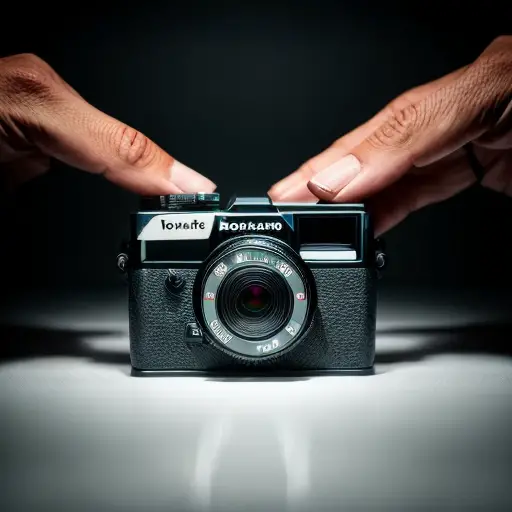The Evolution of Photography: From Film to Digital
Alright, picture this: it's the early 2000s, and the world is buzzing with excitement about the evolution of photography. Film cameras were slowly being overshadowed by the rise of digital photography, and everyone was eager to get their hands on the latest gadget that could capture moments in pixels instead of negatives. In the midst of this frenzy, Kodak, the legendary photography company, decided to jump on the digital bandwagon. It was a game-changer when Kodak released their first digital camera for sale, bringing the wonders of digital photography to the masses. Suddenly, people could snap a picture, preview it on a tiny screen, and delete it if it didn't meet their expectations. It was like a magical power that photographers never knew they needed. And just like that, the world of photography took a leap into the digital era, leaving film cameras in the dust.
Kodak's Pioneering Role in Digital Photography
Kodak's first digital camera for sale was the Kodak DCS 100, which was introduced in 1991. It was a groundbreaking product as it marked the beginning of the digital photography revolution. However, what makes this fact even more interesting is that the Kodak DCS 100 was actually a modified Nikon F3 SLR film camera, with a digital imaging system attached to it. This unique collaboration between Kodak and Nikon allowed photographers to experience the benefits of digital photography while still utilizing their existing film camera bodies.
Let's rewind the clock to the late 20th century, where Kodak, the iconic photography brand, was about to make history. In 1994, amidst a world still enamored with film cameras, Kodak took a bold step forward by introducing their first digital camera for sale. This groundbreaking move marked the beginning of a new era in photography. Kodak's pioneering role in digital photography cannot be overstated. They paved the way for the digital revolution, forever changing the way we capture and share moments. With their innovative camera, Kodak allowed photographers to break free from the limitations of film, embracing the endless possibilities of pixels. It was a game-changer that set the stage for the digital age we now live in, where snapping, editing, and sharing photos has become second nature. Kodak's first digital camera was a true game-changer, and its impact on the world of photography is still felt to this day.
Unveiling the Kodak DC40: The First Digital Camera for Sale

In the early 1990s, the world of photography was on the cusp of a major transformation. Film cameras had long been the go-to choice for capturing memories, but behind closed doors, a revolution was brewing. It was during this time that Kodak, the renowned photography company, unveiled their groundbreaking creation: the Kodak DC40, the first digital camera for sale.
In 1995, the Kodak DC40 hit the market, forever changing the landscape of photography. This compact and innovative camera boasted a 0.38-megapixel sensor, which may seem modest by today's standards, but back then, it was a technological marvel. The DC40 allowed users to capture images digitally, eliminating the need for film and the long wait for development. It was a game-changer that set the stage for the digital revolution that would follow.
With the Kodak DC40, photographers could preview their shots instantly on a small LCD screen, a feature that was unheard of at the time. This meant no more wasted film on blurry or poorly composed images. The camera also offered limited storage capacity, allowing users to store up to 24 images on a removable memory card. It was a glimpse into the future of photography, where the possibilities seemed endless.
The release of the Kodak DC40 marked a turning point in the industry, as it signaled the beginning of the end for film cameras. While the DC40 was not without its limitations, it laid the foundation for the digital cameras we know and love today. It sparked a wave of innovation and competition, as other companies scrambled to catch up with Kodak's pioneering technology.
Looking back, it's fascinating to see how far we've come since the introduction of the Kodak DC40. From its humble beginnings, digital photography has evolved into a ubiquitous part of our lives. We owe a debt of gratitude to Kodak for taking that first leap into the digital realm and forever changing the way we capture and cherish our memories. The Kodak DC40 will always hold a special place in the history of photography as the first digital camera for sale, a true trailblazer in a world that was on the brink of a digital revolution.
Impact and Legacy: Kodak's Digital Camera Revolution
Kodak's first digital camera for sale was the Kodak DCS 100, which was released in 1991. This camera had a whopping price tag of $13,000 and had a resolution of only 1.3 megapixels. Despite its high cost and low resolution by today's standards, it marked the beginning of a digital revolution in photography!
The release of Kodak's first digital camera for sale in 1995 left an indelible mark on the world of photography. This groundbreaking moment not only signaled the beginning of the end for film cameras but also sparked a digital revolution that transformed the way we capture and share moments. Kodak's pioneering role in digital photography cannot be overstated. Their innovative camera paved the way for the countless digital cameras that followed, forever changing the industry. Today, we owe a debt of gratitude to Kodak for taking that leap into the digital realm, as their legacy lives on in every digital camera we use to freeze time and create lasting memories.
